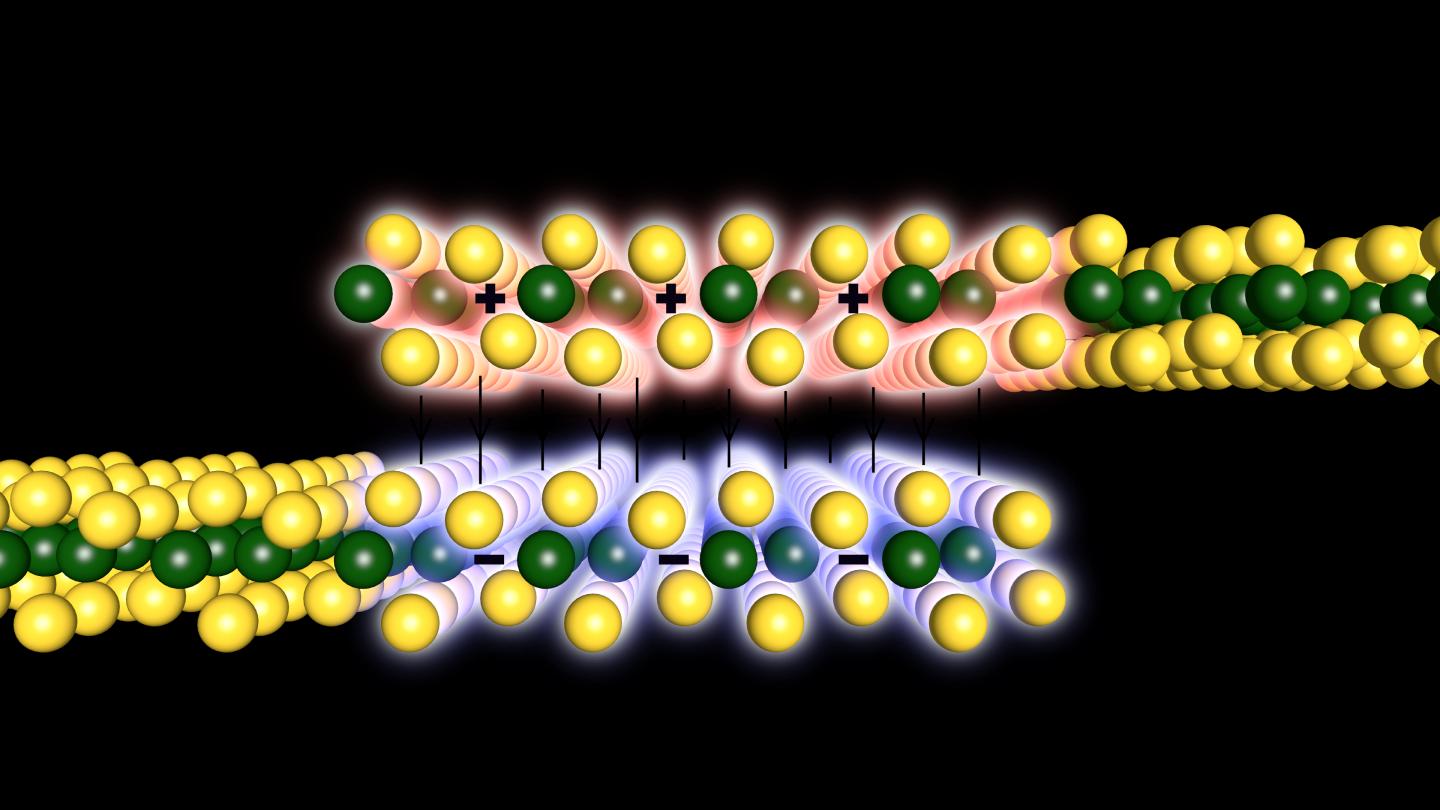2D material shows ferroelectric switching

Scientists at the University of Washington researching the transition metal dichalcogenide WTe2 have shown that its 2D form can undergo ferroelectric switching.
When two monolayers of WTe2 are stacked into a bilayer, a spontaneous electrical polarisation appears, one layer becoming positively charged and the other negatively charged. This polarisation can be flipped by applying an electric field. The results were published in the journal Nature.
"Finding ferroelectric switching in this 2D material was a complete surprise," said senior author David Cobden, a UW professor of physics. "We weren't looking for it, but we saw odd behaviour, and after making a hypothesis about its nature we designed some experiments that confirmed it nicely."
Materials with ferroelectric properties can
have applications in memory storage, capacitors, RFID card technologies and
even medical sensors.
"Think of ferroelectrics as nature's switch," said Cobden. "The polarised state of the ferroelectric material means that you have an uneven distribution of charges within the material - and when the ferroelectric switching occurs, the charges move collectively, rather as they would in an artificial electronic switch based on transistors."
The UW team created WTe2 monolayers from
its the 3D crystalline form, which was grown by co-authors Jiaqiang Yan at Oak
Ridge National Laboratory and Zhiying Zhao at the University of Tennessee,
Knoxville. Then the UW team, working in an oxygen-free isolation box to prevent WTe2 from degrading, used Scotch Tape to exfoliate thin sheets of WTe2from the
crystal - a technique widely used to
isolate graphene and other 2D materials.
WTe2 is the first exfoliated 2D material
known to undergo ferroelectric switching. WTe2 also maintains the ferroelectric
switching at room temperature, and its switching is reliable and doesn't
degrade over time, unlike many conventional 3D ferroelectric materials,
according to Cobden. These characteristics may make WTe2 a promising material
for smaller, more robust technological applications than other ferroelectric
compounds.
The
UW team's discovery also stemmed from theories developed by David J. Thouless,
a UW professor emeritus of physics who shared the 2016 Nobel Prize in Physics
in part for his work on topology in the 2D realm.


































